The Atlantic Navigation Co. Ltd.
![]()
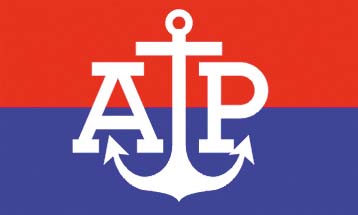 The cargo ships and bulkers of this big Croatian fleet, Atlantska Plovidba (Atlantic Navigation Co. Ltd.), have traded worldwide for over sixty years, and have in recent years discharged coal, biomass or iron ore in the big British ports of Tyne, Tees, Immingham, Port Talbot and Belfast. Dubrovnik is a beautiful city and is known as ‘The Pearl of the Adriatic’, with the history of Atlantska Plovidba closely tied to that of Dubrovnik. The current deep sea fleet is twenty large Handysize, Panamax and Kamsarmax bulkers of 1.2 million dwt in service or under construction. The Kamsarmax bulker AP Argosy completed in April, 2012 takes her name literally from the term ‘Argosy’ or a ‘Ship out of Dubrovnik’. Two bulk carriers of 38,700 dwt recently entered service in 2016 as AP Dubrava and AP Revelin and built to the award winning ‘Green Dolphin’ design by Chinese shipyards.
The cargo ships and bulkers of this big Croatian fleet, Atlantska Plovidba (Atlantic Navigation Co. Ltd.), have traded worldwide for over sixty years, and have in recent years discharged coal, biomass or iron ore in the big British ports of Tyne, Tees, Immingham, Port Talbot and Belfast. Dubrovnik is a beautiful city and is known as ‘The Pearl of the Adriatic’, with the history of Atlantska Plovidba closely tied to that of Dubrovnik. The current deep sea fleet is twenty large Handysize, Panamax and Kamsarmax bulkers of 1.2 million dwt in service or under construction. The Kamsarmax bulker AP Argosy completed in April, 2012 takes her name literally from the term ‘Argosy’ or a ‘Ship out of Dubrovnik’. Two bulk carriers of 38,700 dwt recently entered service in 2016 as AP Dubrava and AP Revelin and built to the award winning ‘Green Dolphin’ design by Chinese shipyards.
Dubrovnik
Dubrovnik was founded in AD 656 as the city of Ragusa by the inhabitants of the Greco-Roman city of Epidaurum, now the village of Cavtat, after the Avar people had sacked their city and other cities along the Adriatic coast. Ragusa accepted a ruler from the court of Venice in 1252 and was of major importance on the Adriatic as a maritime port in the 15th and 16th centuries. During this period, the power and wealth of Ragusa increased so much that her ships traded to every port in Europe. The city was dependent upon ships, which were well found, well maintained and rigorously surveyed.
A statue was erected in 1638 in the Rector’s Palace to Miho Pracat, the only commoner to be so honoured in the one thousand year history of the Dubrovnik Republic. He was a wealthy shipowner from the island of Lopud, who left his wealth to the Dubrovnik Republic. He had learnt the importance of persistence in business by watching tenacious lizards climbing the high walls of his father’s house, failing to reach the top on several attempts but finally achieving their goal. During one of his voyages, he broke a pirate siege and brought corn to the hungry people of Charles V. The king granted Pracat an audience and offered him honours, gold and numerous compliments. The shrewd man of Lopud responded in kind by refusing all gifts, and requested only the king’s serviette, which is now displayed in a museum on his native island of Lopud.
As an early precursor to the Plimsoll Line, Ragusa laid down a regulation for the amount of freeboard of ships when laden. Ships were chartered out to the Spanish Armada for the invasion of England, one of this fleet was wrecked on the Hebrides in a storm. The name of Dubrovnik, which means ‘well wooded’, first began to be used in the 18th century, and it was officially adopted in 1918 after the fall of the Austro-Hungarian Empire. Dubrovnik is very beautiful, and this charming old city is flanked by long high walls and protected by a moat on the landward side. The main pedestrian street of the Placa was originally a narrow inlet between two islands and was filled in with rocks in ancient times to unite the city. The best way by far to enjoy this city is to climb the steep stairways at either of the two gates to the city and walk the encircling walls, giving enchanting vistas.
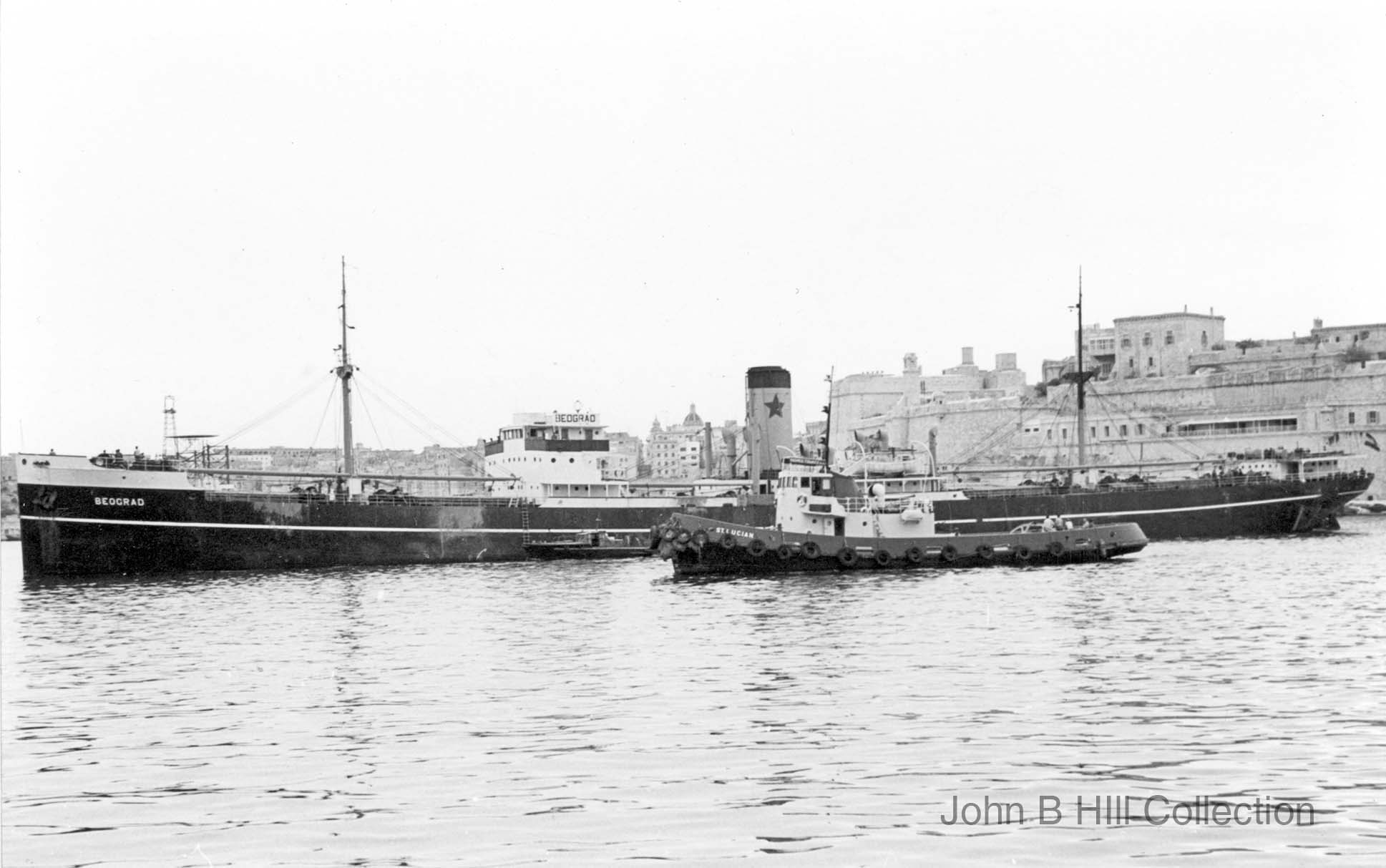
Ragusa Steam Navigation Co. Ltd.
This shipping company was formed in 1881 and by 1914, Dubrovnik shipping companies owned 38 steam tramps all built in British yards and funded by local capital. The Napried and Unione shipping companies united under the name of the Ragusa Steam Navigation Co. Ltd. (Dubrovacka Parabrodarska Plovidba) in 1920. Some of their big steam tramps included Daksa of 4,260 grt built in 1911 at the John Readhead yard in South Shields with five holds and a split superstructure between the bridge and engineers accommodation. She was lost at sea off Cape Corrubedo, foundering on 26th January 1930 off the Spanish and Portuguese border lands with the loss of all of her crew while on a voyage from La Goulette to Rotterdam with iron ore. Two sister tramps of 6,450 dwt were also built by the Readhead yard in South Shields in 1905 as Srgj, and the Greek owned Maria Immaculata, with the latter purchased by the Dubrovnik company in 1922 and renamed Dubravka.
Durmitor of 5,613 grt was built in 1913 by Lithgows as Plutarch and was purchased in 1931 with the company owning two dozen ships in 1933. Five years later it changed its name to Dubrovacka Plovidba with the intention of starting to build diesel powered tramps. The steam powered Dubrovnik of 9,150 dwt was completed by Lithgows in 1938 as the last new tramp for the company. At the outbreak of World War II, a big fleet of eleven steam tramps and fourteen coasters was owned, the majority of which were lost to Axis enemy action. The survivors formed part of the State owned Adriatic Tramp Shipping fleet in 1946.
Atlantic Navigation Co. Ltd.
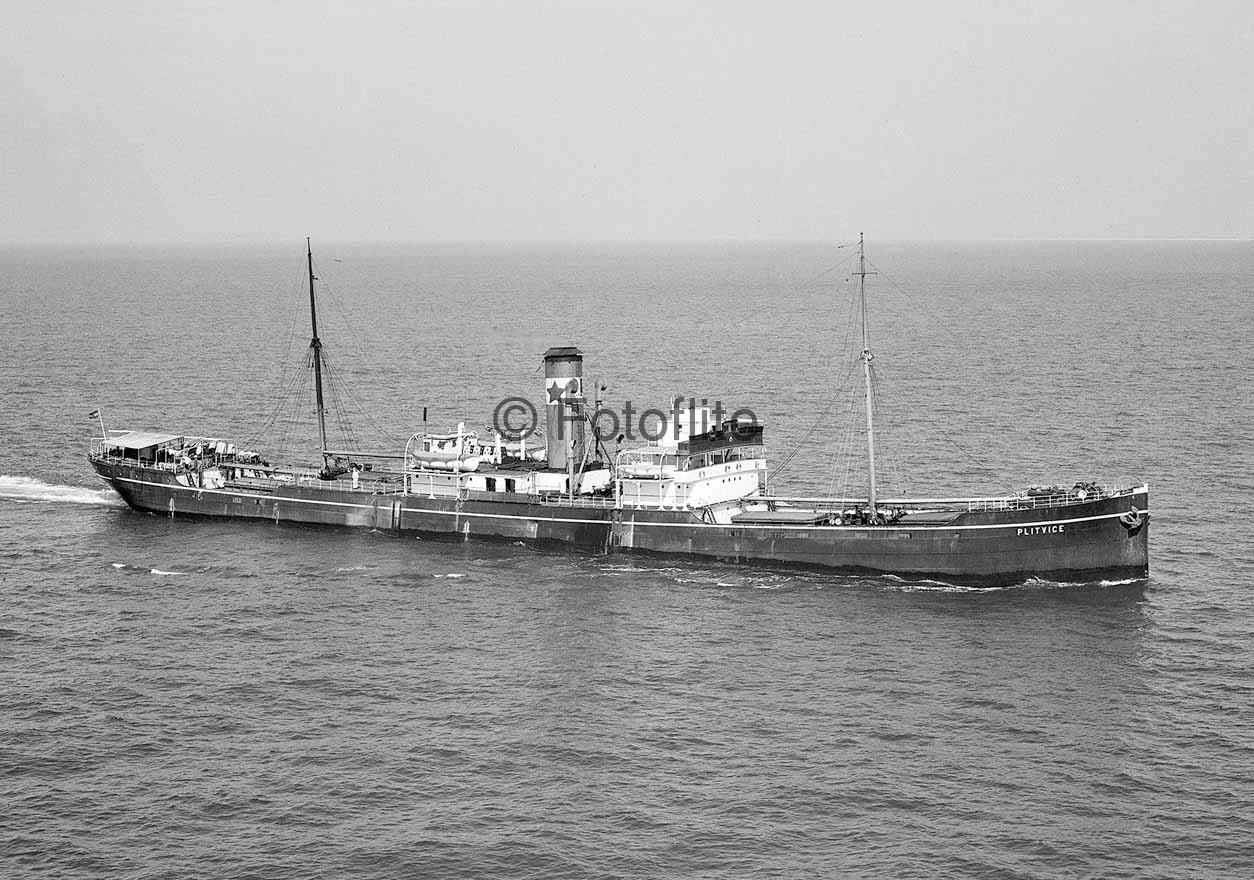
A group of shipowners, visionaries and aficionados of tramp shipping met in the Club Miho Pracat in Dubrovnik in 1955 with a view to decentralise part of the State owned Adriatic Tramp Shipping (Jadranska Slobodna Plovidba). In 1946, the war surviving ships of the many private Yugoslavian shipping companies had been nationalised into three separate State owned shipping companies. These were Jugoslav Line (Jugolinija) for deep sea passenger and cargo services, Jadrolinija Adriatic Line for coastal passenger and cargo services dating from 1872, and Jadranska Slobodna Plovidba for worldwide tramping. Jadrolinija Adriatic Shipping Line still runs coastal services today along the Dalmatian coast, and between Croatian and Italian ports.
The Federal Executive Council of the Yugoslavian Government agreed to set up shipping companies in Dubrovnik and other port cities on the Croatian coast, and on 27th May 1955 the City of Dubrovnik founded Atlantska Plovidba DD (Atlantic Navigation Co. Ltd.). This was a resurrection of a pre-war tramping company of the same name based at Susak near Rijeka, which owned four tramps at the beginning of World War II, with the two war survivors, Senja and Sreca, becoming part of the State owned fleet in 1946 as Korcula and Kornat.
Seven old tramps of 35,038 grt, one built fifty years previously in 1905, were purchased on 19th December 1955, starting with Banija, the former Sveti Vlaho of 9,832 dwt built in 1928 by Lithgows at Port Glasgow. Sveti Vlaho (Saint Blaise) is the patron saint of Dubrovnik, and this old tramp was followed during the next year by Korcula of 8,280 dwt built in 1913 on the Clyde as Ardgair and a survivor of the pre-war Atlantska Plovidba fleet, Livno of 7,934 dwt built at Burntisland in 1928, Plitvice of 6,428 dwt built as Maria Immaculata by John Readhead at South Shields in 1905 and a survivor of the Ragusa Steam Navigation fleet, Korenica of 8,270 dwt built in 1919 at Glasgow, Kragujevac of 8,103 dwt built in 1920 by the John Readhead shipyard in South Shields as Ronda, and Beograd of 9,600 dwt built in 1925 by Workman, Clark at Belfast as Radport.
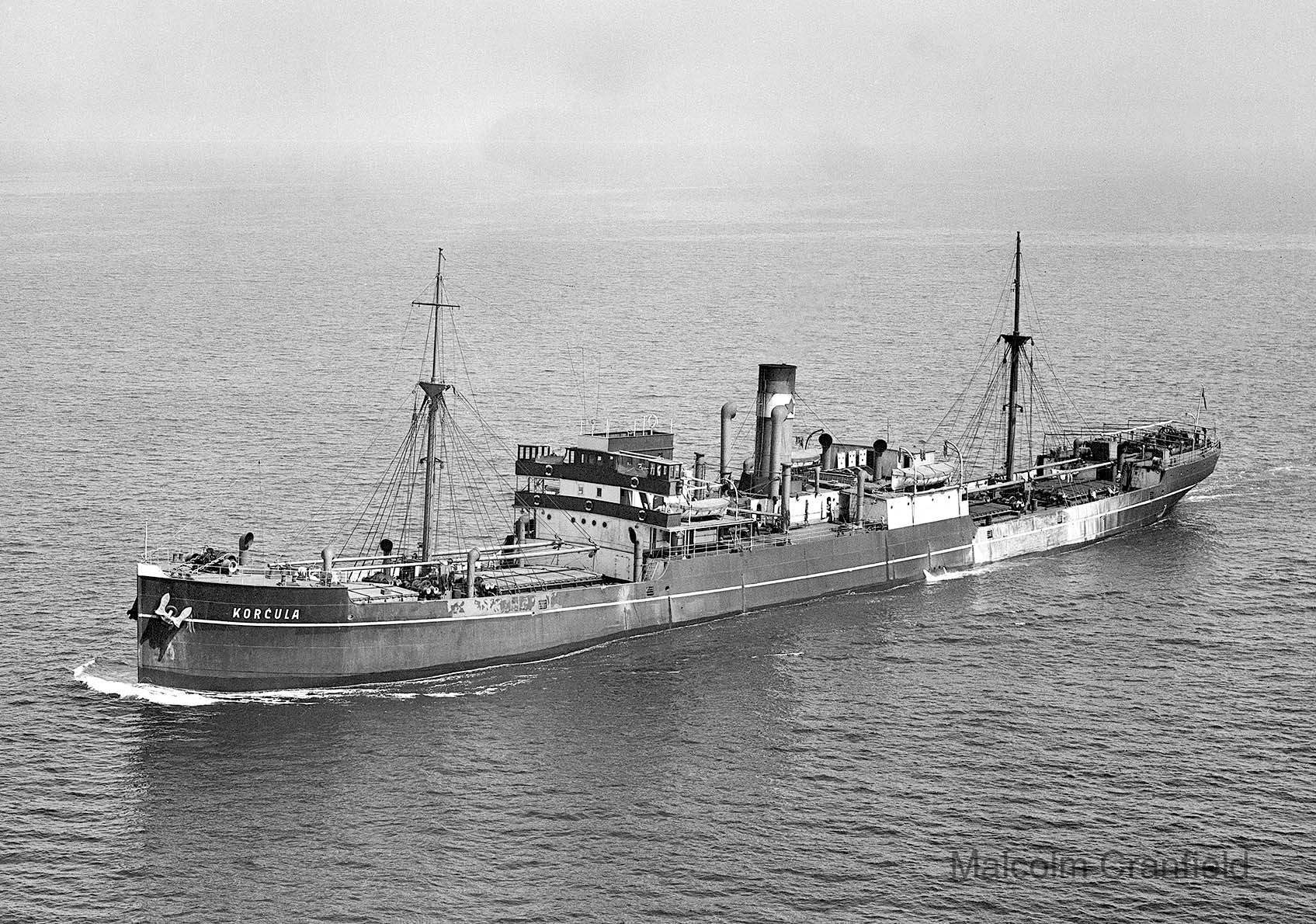
Dubrava of 7,390 dwt built in 1938 by Pickersgill at Sunderland as Egton for Headlams of Whitby was purchased in June 1957, and the Cardiff tramp Indian City of 10,300 dwt built by Bartrams at Sunderland in 1944 was purchased in August, 1957 and renamed Gruz. Several new open or closed shelterdeckers were then built by the ‘3 Maj’ yard of Brodogradiliste at Split starting with Petka of 10,230 dwt as an open shelterdecker and delivered on 29th December 1957. She had dimensions of length 479.1 feet by moulded beam of 60.3 and a loaded draft of 25 feet. She was powered by a seven cylinder two stroke Fiat diesel made in Turin to give a service speed of 16 knots. She was equipped on her bridge with all of the latest aids to navigation including radar, direction finder, electric signalling device, gyrocompass and Decca Navigator.
Petka was followed by the engines aft Drzic of 12,860 dwt as a open shelterdecker in 1960, and the engines aft sisters Gundulic and Ruder Boskovic of 13,180 dwt in 1960, all from the same Split yard. The latter pair of new tramps had the unusual accommodation for a tramp of six cabins for passengers, and all were strengthened for heavy cargoes with the collision bulkhead up to weather deck level through the shelterdeck. Ruder Boskovic was named after a Croatian mathematician, physicist and astronomer of the 18th century who solved problems in sea navigation.
Steam tramps from British yards of 10,000 dwt built in World War II included Naprijed completed in 1944 at West Hartlepool as the Admiralty maintenance ship Holm Sound and purchased from Elder Dempster Lines in 1959 as Prah, Korcula built in 1946 at Scotstoun as Mountpark for Denholms, and Kolocep built in 1944 as Rivercrest at Port Glasgow by Lithgows for the Crest Shiping Co. Ltd. with Yugoslavian connections. Cavtat and Mljet were standard ‘Liberty’ types of 10,000 dwt purchased in 1962, and Irish Hazel of 8,850 dwt built by William Gray at West Hartlepool in 1950 was purchased in 1960 and renamed as Konavli. Silverpoint of 11,700 dwt was purchased in 1965 from Silver Line of London, she had been built in 1957 by the Bartram yard at Sunderland. Durham Trader of 15,000 dwt built in 1959 by the Sunderland yard of Austin & Pickersgill Ltd. for Trader Navigation Co. Ltd. of London was also purchased in 1965 and renamed Miho Pracat. On the tenth anniversary of the company in 1965, Atlantska Plovidba had a fleet of twenty ships of 275,000 dwt, a good beginning with profitable trading by this new Balkan shipping company.
The deep sea Croatian fleet was renewed from the mid 1960s with larger engines aft vessels including the sisters Kragujevac and Plitvice of 15,200 dwt with six holds and six hatches and a dozen derricks to work cargo plus a heavy lift derrick of 30 tonnes capacity. They had a fo’c’stle of length fifty feet, and the aft accommodation block was of 114 feet on an overall hull length of 545.6 feet, moulded beam of 67.5 feet and loaded draft of 26.7 feet. Four ‘Hispano-Freedom’ types of 15,908 dwt were completed in 1969/73 by the Spanish yard of Astilleros de Cadiz in Gundulic, Getaldic, Ivo Vojnovic and Mavro Vetranic. The first pair were named after Baron Getaldic-Gundulic (1795-1860), and Mayor of Dubrovnik for thirteen years from 1832, and the last pair after Croatian writers from Dubrovnik of political, psychological and patriotic books. The last of the original seven tramps purchased in 1955/56, Beograd, was sold in March 1970.
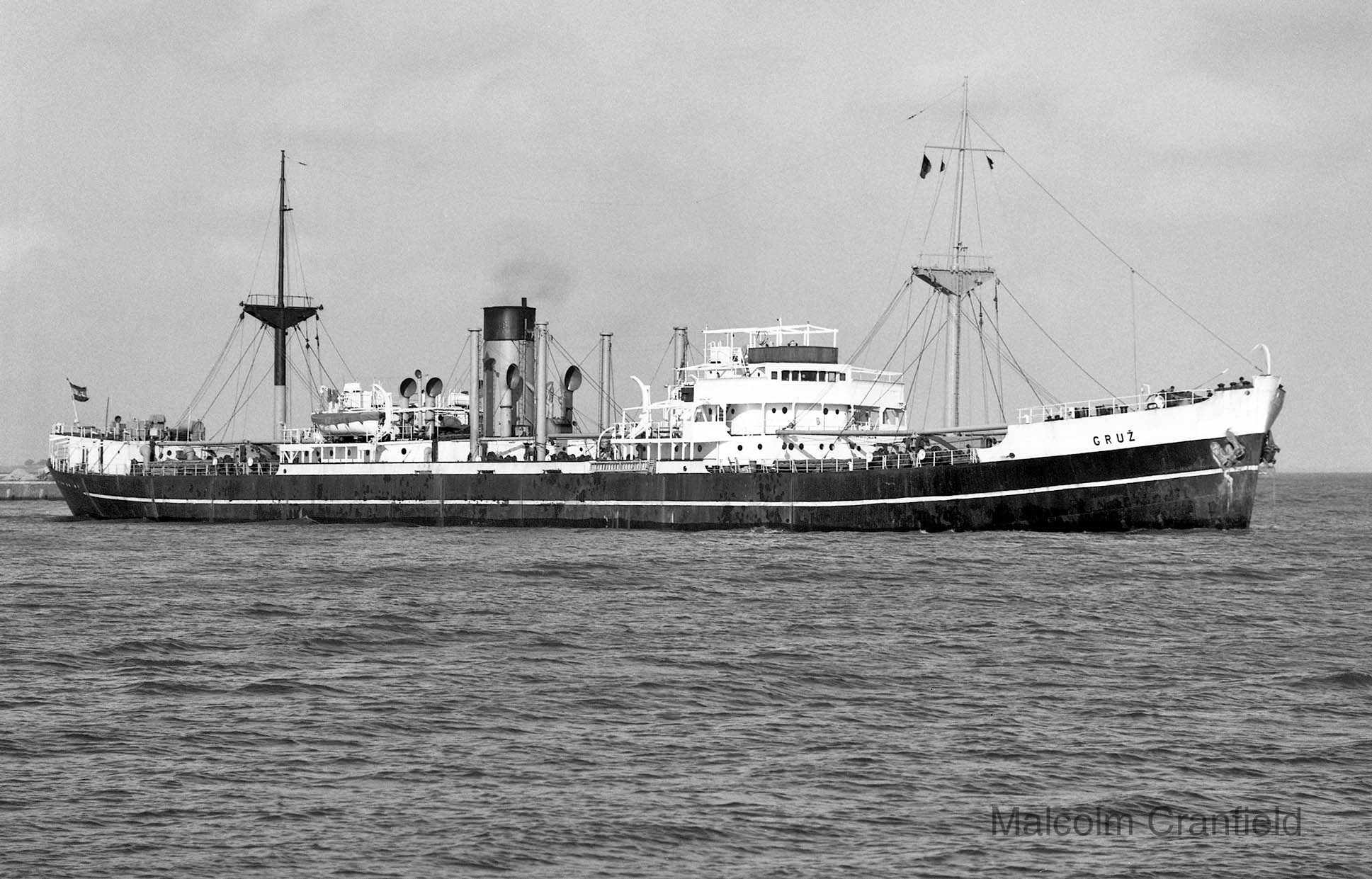
Coastal Services
Atlantska Plovidba also ran coastal cargo services along the Adriatic coast from Dubrovnik in the late 1950s and throughout the 1960s to Split, Sibenik, Zadar, Pula and Rijeka as well as to the beautiful Adriatic islands of Mljet, Peljesac, Korcula, Lastovo, Hvar, Brac, Solta and Vis. Company small coasters included the wooden Susak with one hold and two hatches, the sail and motor propelled Dubac built in 1931, the steamer Pcela of 311 grt built in Holland in 1918, the motor coaster Lopud of 250 grt built in 1953 and sister Zaton built in 1957, Uvala of 397 grt built in 1951, and the larger coasters of 1,500 grt in Bitola (ex Adria in 1963), Kuciste built in 1940 and Lapad built in 1949 at Burntisland as Lockwood for Constantine Lines and purchased on 17th June 1963.
Orm Jarl of 1,725 dwt had been purchased from Trondheim owners in October 1958 and renamed Travnik and served on the coastal routes for seven years. Tito Veles of 3,077 dwt was built at Seville in 1962 as Terica and was purchased in January, 1967 from United Levant Lines of London, and Krusevo of 3,925 dwt was purchased in July, 1969. A regular liner service operated between the Adriatic coast and the west coast of Britain from 1961 using three small ships plus two new coasters of 3,234 dwt built at Trogir in 1968 as Korcula and Cavtat. The latter ship was named after the small village ten miles to the south of Dubrovnik and near the airport, with excellent diving sites on sunken Greek and Roman galleys.
The coastal services were later joined by the coasters Molunat of 1,000 dwt from an Aarhus owner in April 1982, and Orasac and Doli of 1,140 dwt built at Ringkobing in 1982 and purchased from F. T. Everard & Sons Ltd. of Greenhithe in June 1988 as Wiris and Wiggs together with their sister Bobara built as Lu by the same yard. Two coastal general cargo ships, Mokosica and Sipan, of 2,500 dwt were sold during 2012 after having been chartered for five years for short sea services within the Mediterranean and had been completed by the Brodogradiliste yard at Kraljevica.
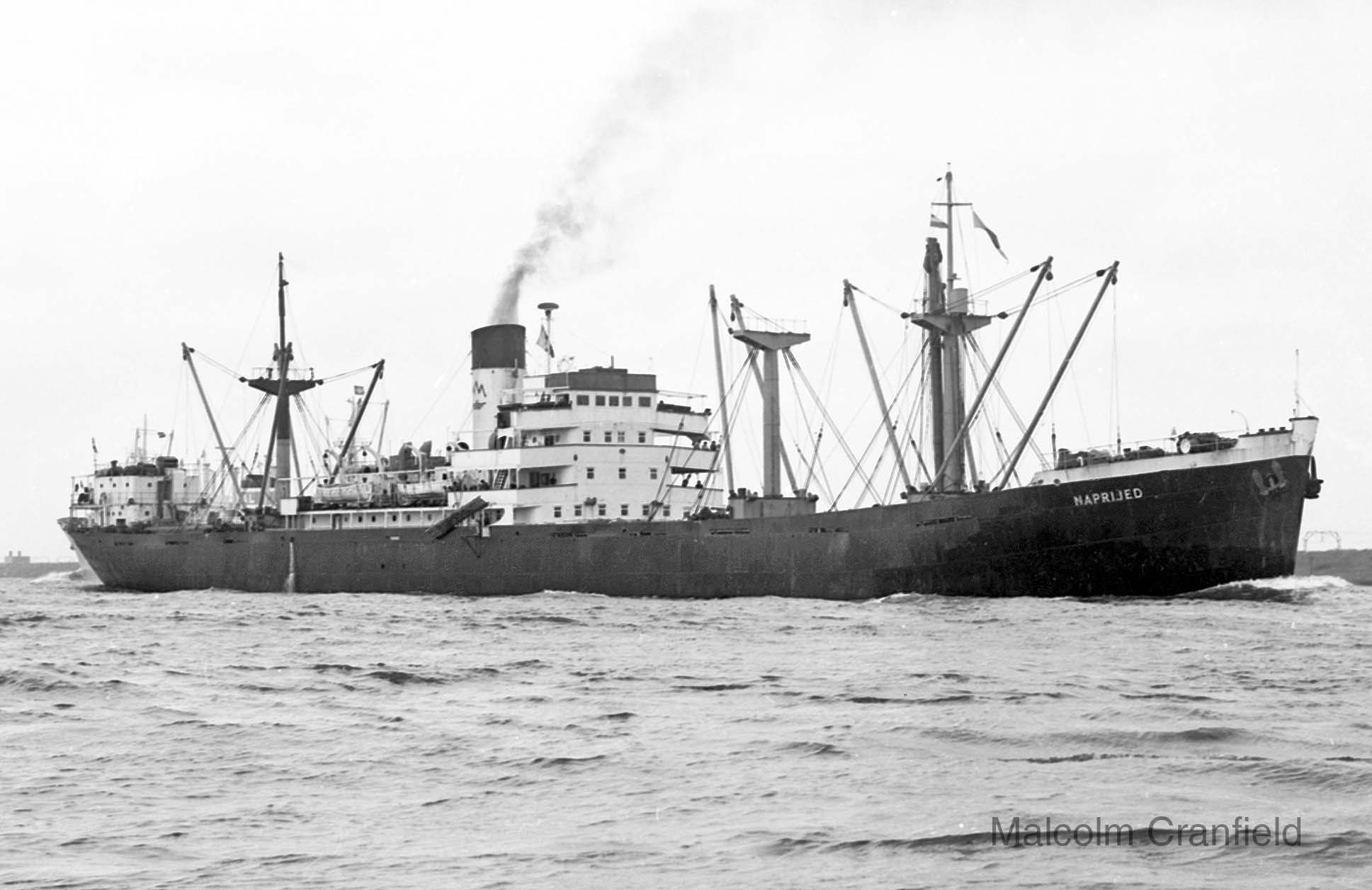
Handysize Bulkers
Four large bulkers were completed in 1968 in the range from 25,000 dwt to 28,000 dwt in Banija, Banja Luka, Baranja and Bosanka, two from the Split shipyard and two from the Trieste yard of C.R.D.A. in Italy. Dubrovnik of 24,447 dwt was completed in Cadiz in 1971, and the sisters Cvijeta Zuzoric and Ruder Boskovic of 27,020 dwt in Spain in 1974 to give a fleet of 24 ships. The larger bulker Hercegovina of 30,000 dwt was completed at Rijeka in 1977, and this fleet was engaged on the following voyages in October 1978:-
- Banija -Antwerp to Chicago
- Banja Luka – Rijeka to Augusta
- Baranja – Tampa to Koper
- Bosanka – Thunder Bay to Hamburg and Emden
- Cvijeta Zuzoric – Malaga to Apapa/Lagos
- Drzic – Duluth to Basrah
- Dubrovnik – Barry to Detroit
- Getaldic – Paranagua (Brazil) to Puerto Cabello (Venezuela)
- Gundulic – Montreal to Cienfuegos (Cuba)
- Hercegovina – Fos to Detroit
- Ivo Vojnovic – Nuevitas to China via Panama
- Jadran – Palermo to Catania
- Korcula – Manchester to Dubrovnik
- Kragujeva – Trieste to Buenos Aires
- Krusevo – Rijeka to Manchester
- Mavro Vetranic – Apapa/Lagos to Barcelona
- Miho Pracat – Dammam to Split and Sibenik
- Petka – Rijeka to Piombino
- Plitvice – Dammam to Montreal
- Ruder Boskovic – New Orleans to Spezia
- Titov Veles – Manchester to Rijeka
The ‘Hispano-Freedom’ vessel Mavro Vetranic later grounded on 30th October 1989 on the Pulaski Shoal Reef in the Tortugas National Pak of Florida to the west of the Florida Keys and caused great damage to 3,465 metres of pristine coral reef. She was refloated and arrived at Miami on 5th November for inspection before continuing on her voyage from Tampa to Hamburg.

Panamax Bulkers
The Panamax bulker Jadran of 72,150 dwt was completed at Sunderland in 1976, and was one of an order for five such bulkers placed with Sunderland Shipbuilders Ltd. by Yugoslavian shipping companies. The other quartet of Kosmaj, Kordun, Orgen and Sutjeska were for the order of the State owned Jugoslavenska Oceanska Plovidba subsidiary of Jugolinija. I remember seeing this quintet fitting out in the Wear during 1976/77 and they seemed large for that era, but much larger bulkers were already on the slipways at the Thompson yard that launched them in a direct line for the harbour and the narrow passage out to sea. Indeed, these larger bulkers were towed out stern first as it was impossible to turn them round inside the restricted harbour.
Jadran was followed by four more Panamaxes from the ‘3 Maj’ shipyard of Brodogradiliste at Rijeka during 1981/84 in Peljesac, Konavle and two that were completed for long term charter to Cast Line as Cast Polarbear and Cast Caribou for North Atlantic combined bulk and container services. Jadran, Peljesac and Konavle normally traded with grain from New Orleans or Houston to European ports such as Antwerp, Hamburg, Rostock, Barcelona, San Ciprian (Spain), Rijeka, Odessa, Novorossisk, Catania, Palermo and Genoa. Grain was also carried from New Orleans to Taichung (China), Inchon (Korea) and other Far Eastern ports, and variations included Hampton Roads with coal to Brazilian ports then iron ore from Paranagua to Nikolayev (Black Sea).
Iron ore was transported from Mormugao (Goa) to Bagnoli near Naples, bauxite from Port Cartier (Canada) to Aughinish (Ireland), and coal from Richards Bay (South Africa) to Ghent. Jadran loaded iron ore at Port Kembla and sailed for Philadelphia on 5th August 1988 but suffered steering gear problems and arrived at Jacksonville (Florida) on 10th September 1988 in tow of the tug Elsbeth II for repairs, but was soon back in service.
The Panamax bulker Konavle built in 1984 was also taken on long term charter by Cast Line as Cast Beaver, and Cast Caribou completed in 1981 came off charter in 1992 and was renamed Konavle for worldwide voyage trading. The Sunderland built bulker Jadran was sold in 1996 to Greek interests and renamed Lemnos, while Cast Polarbear and Cast Beaver came off charter in 1995 and were renamed Atlant I and Atlant II respectively before taking the traditional names of Jadran and Miho Pracat respectively. There were fourteen big bulkers of 725,000 dwt in the Atlantska Plovidba fleet at the beginning of 1996 in five Panamaxes, two slightly smaller bulkers of 61,000 dwt in Dubrovnik, (purchased in 1989 and renamed City of Dubrovnik in 1997), and Imperial (purchased in 1994 as Santa Margarita), and seven Handysize bulkers in Cvijeta Zuzoric, Favorita, Hercegovina, Mljet, Petka, Ruder Boskovic and Sveti Vlaho. Cvijeta Zuzoric struck her starboard side on the lock wall in the Welland Canal on 6th October 1995 due to strong currents, but damage was slight and she continued her voyage to Comeau Bay to load grain. Petka of 34,750 dwt was unable to enter the Port of Amsterdam in October 1997 as a lock had been disabled by protesters who had lost their jobs in the port. Mljet of 29,700 dwt, flying the Maltese flag, was detained in Canada in July 1998 on the grounds that her main engines were defective.
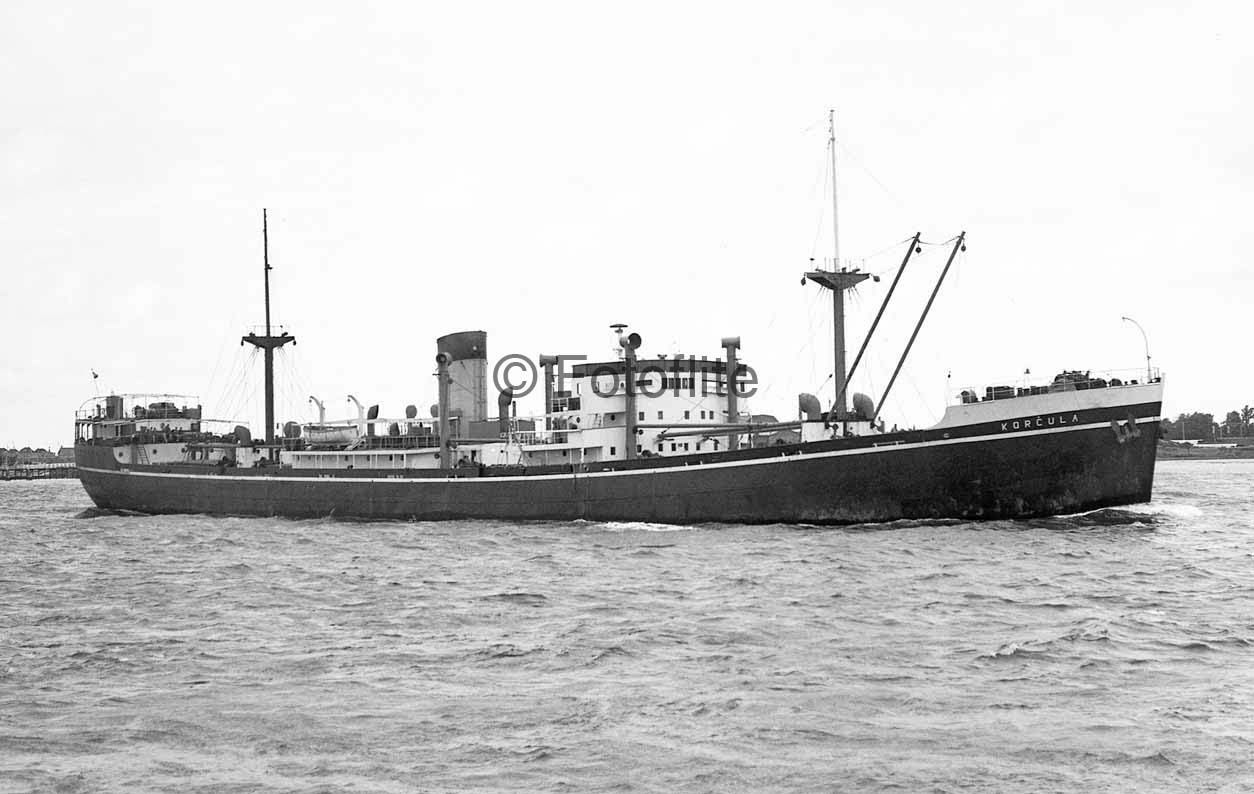
Heavy Lift Ships
In March 1979, the first of four small ships equipped with heavy lift derricks was purchased as Super Scan and renamed Kutina of 2,642 dwt, and began a project cargo service from Eastern European and Adriatic ports to Manchester. She was followed by Thor Scan renamed Jahorina, Heavy Scan renamed Ston, and Scan Glen renamed Slano. The 250 tonne Stulcken derrick equipped Starman Anglia of 1,970 dwt was purchased in August, 1984 and renamed Lapad, and ran a service to Felixstowe and Rotterdam from the Mediterranean. She had been launched at the Walker yard of Swan Hunter Shipbuilders Ltd. on 21st July 1977 and completed at Haverton Hill on the Tees in January 1978.

The heavy load carriers Kupari, Plitvice and Slano (2), all of 2,720 dwt, entered service in 1985 equipped with a crane of one hundred tonnes capacity and a derrick of 150 tonnes capacity. The heavy lift ship Gruz of 4,244 dwt was purchased in 1997 as Clipper Cheyenne, built at Capelle in Holland in 1986 and equipped with twin two hundred tonne cranes and a stern ro-ro docking facility. She was on charter to Mammoet and was named after the harbour between the Lapad peninsula and the mainland at Dubrovnik with its Jadrolinija ferry terminal. She was followed by two chartered ro-ros with the romantic names of Love Song and Love Letter in June 2002 equipped with two cranes of 120 tonnes capacity.
Four new specially designed heavy lift ships joined the service in 2007 in the chartered Atlant Frauke, Atlant Regine, Atlant Svenja and Atlant Trina of 5,799 grt and 7,717 dwt. They were equipped with two heavy lift cranes of 250 tonnes capacity giving a heavy lift capacity of 500 tonnes when used in tandem. They had been completed in 1994/95 by the J. J. Sietas yard in Hamburg as ice strengthened heavy lift ships for Paul Heinrich Gmbh for worldwide trading. They were time chartered to operate either in the Caribbean or in the Middle East or Far East.
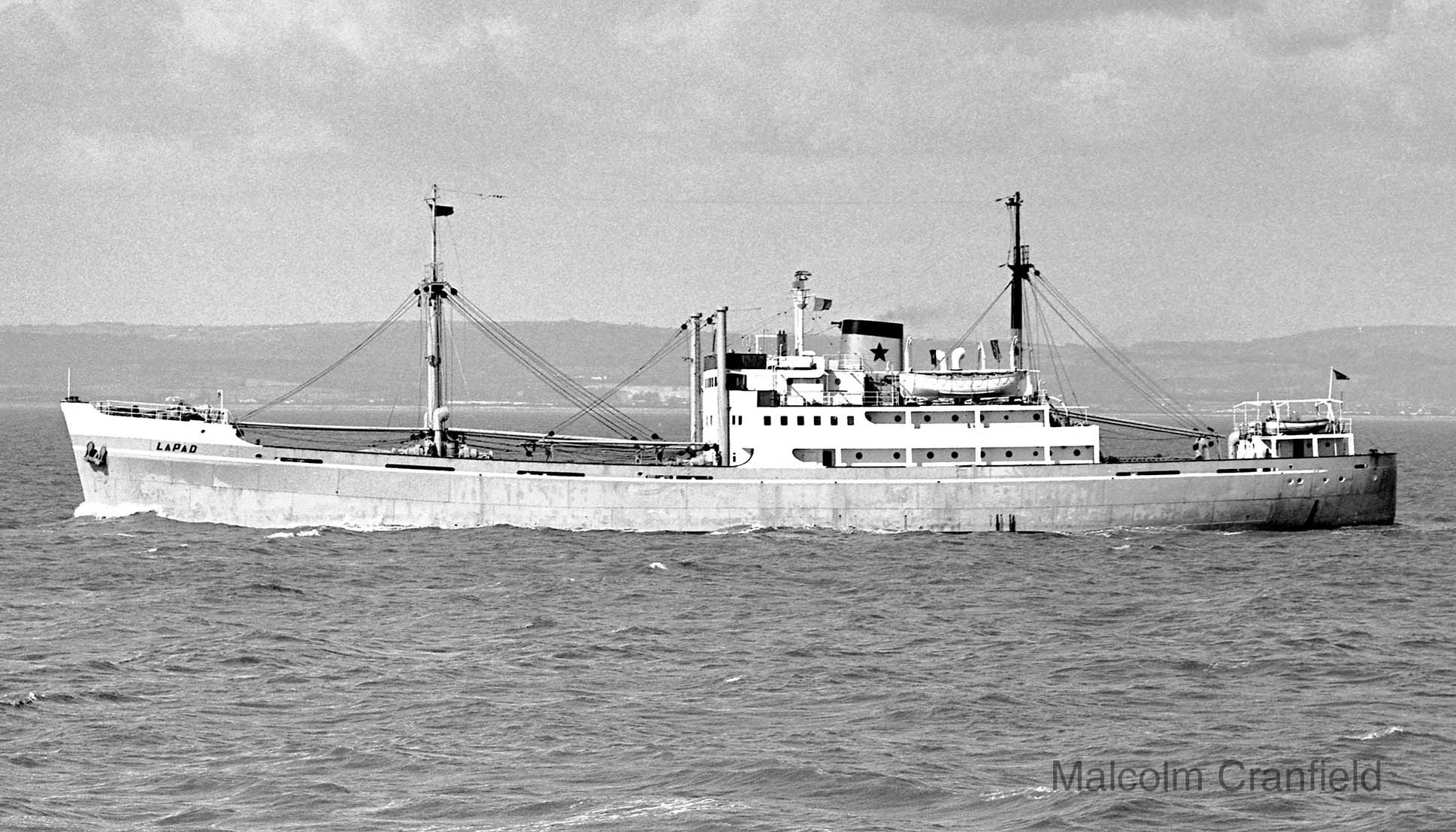
Balkans War And Diversification
After the death of Tito on 4th May 1980, democratic discontent began to surface, particularly in Croatia. In 1990, the first free elections to be held in Yugoslavia in post war years took place, leading to an end of Communist party monopoly control of the Government. Unfortunately, this unleashed simmering ethnic and nationalistic tensions that erupted between the newly independent states of Serbia, Croatia, Slovenia, Bosnia Hercegovina, Kosovo and Macedonia. Croatia and Slovenia declared independence on 25th June 1991 and began the process of disintegration of Federal Yugoslavia.
A tragic conflict lasted four years between 1991/95 and was only ended by United Nations airstrikes on Belgrade and the Serbian Army, leading to a long term commitment of peacekeepers from the United Nations and particularly Britain. A multi nation taskforce NATO taskforce searched all ships entering the Adriatic, and confiscated all armaments being supplied to the warring nations. The city of Dubrovnik had been badly damaged by two thousand shells with 650 gaping holes in the famous city walls that stretch for two kilometres around the old city. Some 114 civilians were killed in the shelling, and Atlantska Plovidba staff had at times been forced to flee from their office in Dubrovnik. The company found this to be the most difficult period in its history of operating ships, with the company registering its ships in Malta as the Croatian Ship Registry was not recognised during the war.
A diversification was begun due to these difficulties thanks to another company, Atlantic Cruising Inc., also set up in 1955, for the tourist trade of coastal and river cruising. Two hotels in Dubrovnik, the Imperial Hotel, refurbished and reopened on 1st July 2005, and the Lapad Hotel purchased in 2005, were important parts of this tourist diversification, as well as motels, holiday camps, restaurants and canteens. The Atlant Travel Agency and tourist arm of Atlantska Plovidba was developed after the Balkans War in the late 1990s, and has grown into a sizeable 16.5% of company turnover by 2012. Shipping still accounts for 83.2% of turnover, and there is a small turnover of 0.3% in vessel equipment and inventory, maintenance, spares and services, as well as scientific research and development, and market analysis and research. Tourism had begun a century earlier in Dubrovnik in 1897 with the start of construction of the Imperial Hotel.
The company employed 110 people in May 1999 when it took part in a symposium held by the Croatian Shipowners Association to highlight Croatian shipping prospects, which was also attended by Losinjska Plovidba, Tankerska Plovidba, Croatian Line and Jadroplov.
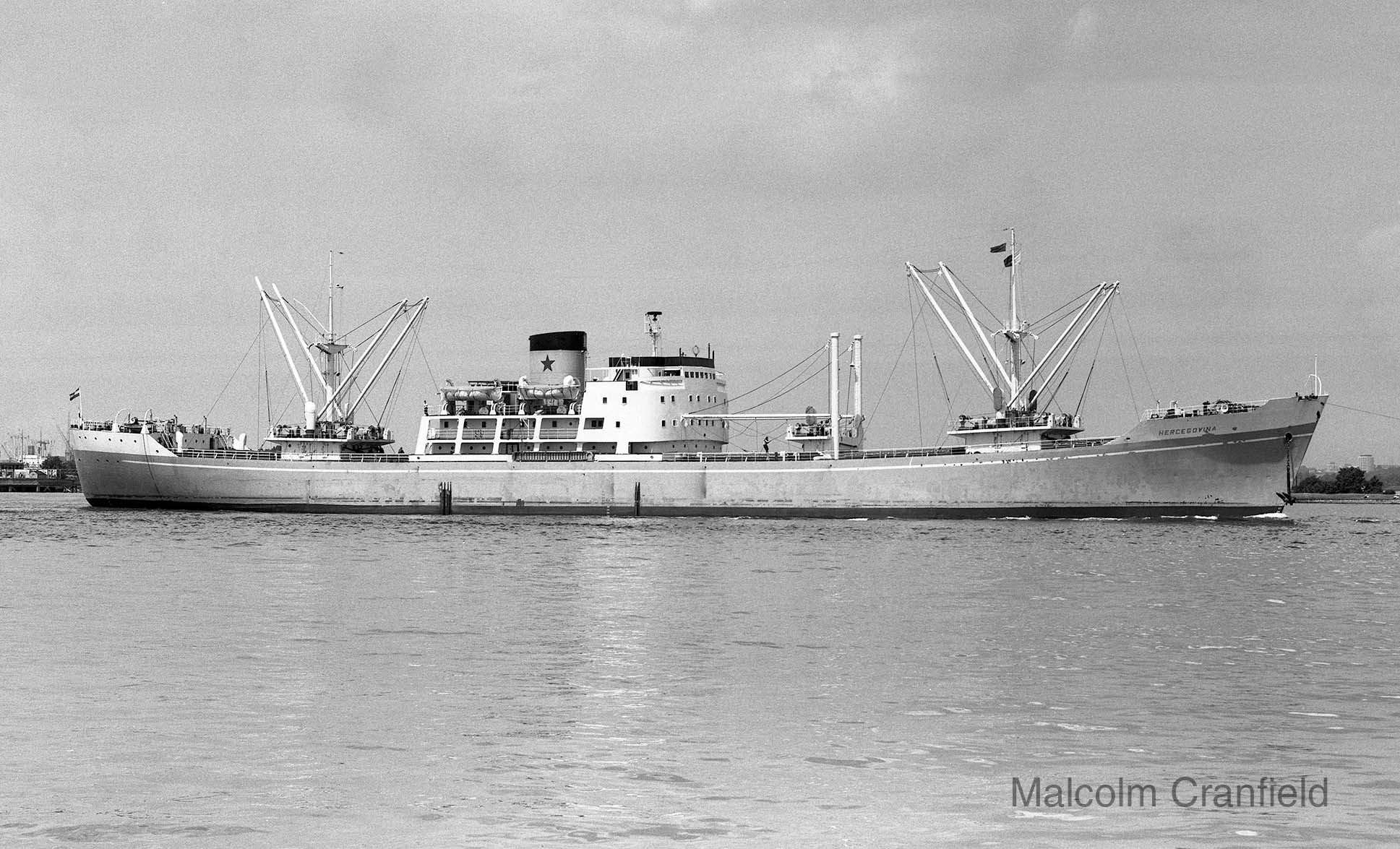
Millennium Fleet
The company has always had a policy of being led and managed by Master Mariners of great experience, who had first hand experience of world tramping and knew the dangers of certain cargoes. They would never ask their Masters and crews to load any cargoes that they had not previously transported when a Master in the fleet. During the previous two decades up to the Millennium, Capt. Pero Asete was Managing Director, Capt. Z. Njiric was Commercial Director, Capt. K. Bonacic was Senior Marine Superintendent with Capt. V. Nonveiller also on the Board. At the Millennium, Capt. Ante Jerkovic was Managing Director, Capt. Antun Separovic was Chartering Manager, and Capt. Zelimir Usokovic was Senior Fleet Manager.
A fleet of fifteen Handysize and Panamax bulkers of 779,378 dwt was operated at the Millennium in the range from 35,000 dwt to 75,000 dwt with an average size of 52,000 dwt. These were City of Dubrovnik, Favorita, Imperial, Jadran, Kolocep, Konavle, Miho Pracat, Mljet, Oluja, Orsula (ex Federal Calumet), Peljesac, Saint Nikola I, and Sveti Vlaho, with Unterwalden and Luzern of 45,000 dwt chartered from Swiss owners. In addition, four small ro-ros and general cargo ships operated a service from Adriatic, Eastern European and North African ports to British and North European ports. These were Lapad (ex Starman Anglia), Kupari, Plitvice and Slano, and the twin screw Lapad loaded flexible pipe at the Offshore Technology Park at Walker on the Tyne in June, 2002 for the oil industry in Libya. The long established London agents of Anglo Adriatic used by Atlantska Plovidba had closed down at the end of Millennium year as a result of a commercial decision taken by its Croatian shareholders, who realised that their U.K. services needed to be strengthened and broadened to include project cargo.

The deep sea bulker fleet were engaged on the following voyages at the end of the Millennium year:-
- City of Dubrovnik – Paranagua to Hamburg with iron ore
- Favorita – New Orleans to Rijeka with grain
- Imperial – Ijmuiden to New Orleans in ballast
- Jadran – Tuzla to Puerto Bolivar (Colombia)
- Kolocep – Yokohama to Kalama (Columbia river)
- Konavle – Trombetas (Brazil) to Port Alfred
- Luzern – New Orleans to Subic Bay via Panama
- Miho Pracat – Beaumont (Texas) to Brazil
- Mljet – Cleveland and Toledo to Hamburg
- Oluja – Paranagua to Rotterdam with iron ore
- Orsula – Shanghai to Australia
- Peljesac – Trieste to Syros
- Saint Nikola I – Tubarao (Brazil) to Tees with iron ore
- Sveti Vlaho – Port Kembla to Pohang
- Unterwalden – New Orleans to Rijeka
The Swiss owned Panamax bulker Romandie was purchased in July 2001 from Suisse-Atlantique and renamed Petka, and three bulkers were sold by the company in 2005 and bareboat chartered back. The chartered Luzern and Unterwalden were purchased from other Swiss owners and renamed Gundulic and Getaldic in 2005. The new Panamax bulkers Imperial and Libertas, the latter named after the flag of Dubrovnik, were completed by the STX yard at Jinhae in South Korea in 2007. The fleet were engaged on the following voyages in October, 2007:-
- City of Dubrovnik – In dry dock at Zhoushan
- Getaldic – Shanghai to Houston via Panama
- Gundulic – Haldia (Greece) to Singapore & Xiamen
- Imperial – Arrived at Chinhai
- Jadran – El Dekheila (Egypt) to Tuzla (Turkey)
- Kolocep – Kaohsiung to Darwin
- Konavle – Puerto Bolivar to Jacksonville
- Libertas – El Ferrol to Norfolk (Va)
- Mljet – Muuga (Estonia) to New Orleans & Vera Cruz
- Miho Pracat – Maracaibo to Mobile
- Orsula – Paranagua to Port Talbot with iron ore
- Oluja – San Nicholas (Argentina) to Port Kelang
- Peljesac – Puerto Bolivar to Mobile
- Petka – Baltimore to Rotterdam & Amsterdam
- Sveti Vlaho – Panama to Ireland (for orders)
- Sveti Nikola I – Tees to Pohang via Suez
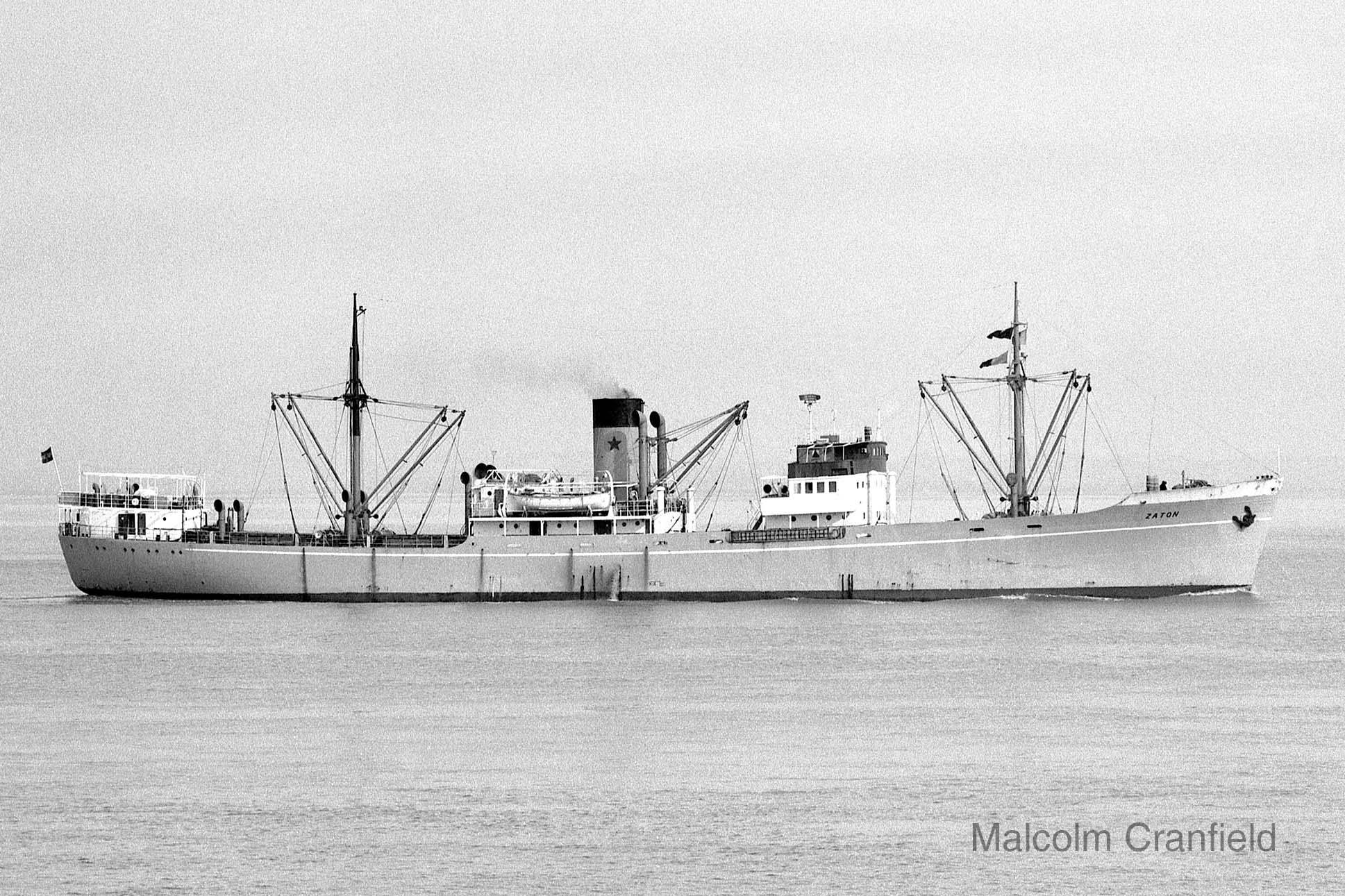
The Kamsarmaxes Miho Pracat (3) and Zagreb of 80,000 dwt were completed in 2008, and AP Astarea, AP Drzic, AP Slano, AP Ston and AP Sveti Vlaho of 57,000 dwt during 2009/11. Vietnamese and Chinese yards had built these big bulkers, and this latter series of bulkers introduced the new ‘AP’ prefix into the fleet to give a visible corporate identity. They had five holds and five hatches and were powered by six cylinder B&W-M.A.N. diesel engines of 12,888 bhp giving service speeds of 14.5 knots. Two more Kamsarmaxes of 80,000 dwt followed from Jingjiang shipyards in April and November of 2012 as AP Argosy and AP Jadran. AP Argosy was launched on 18th November 2011 as the first company bulker to be built in China. The pair are ice strengthened for Baltic and worldwide operation, and are powered by uprated seven cylinder B&W-M.A.N. diesel engines of 15,800 bhp to give service speeds of 14.5 knots.
Atlantska Plovidba has financed three institutions in Dubrovnik for maritime training and research, the Dubrovnik Maritime Nautical College in 1959, the Dubrovnik Maritime Engineer College in 1964, and the Dubrovnik Maritime University in 1986. On 30th March 2011, Atlantska Plovidba donated a Polaris Maritime simulator to the Maritime University of Dubrovnik for the training of seafarers. The Head Office of Atlantska Plovidba is on the second floor of a modern nine storey building in the new business centre of Dubrovnik.
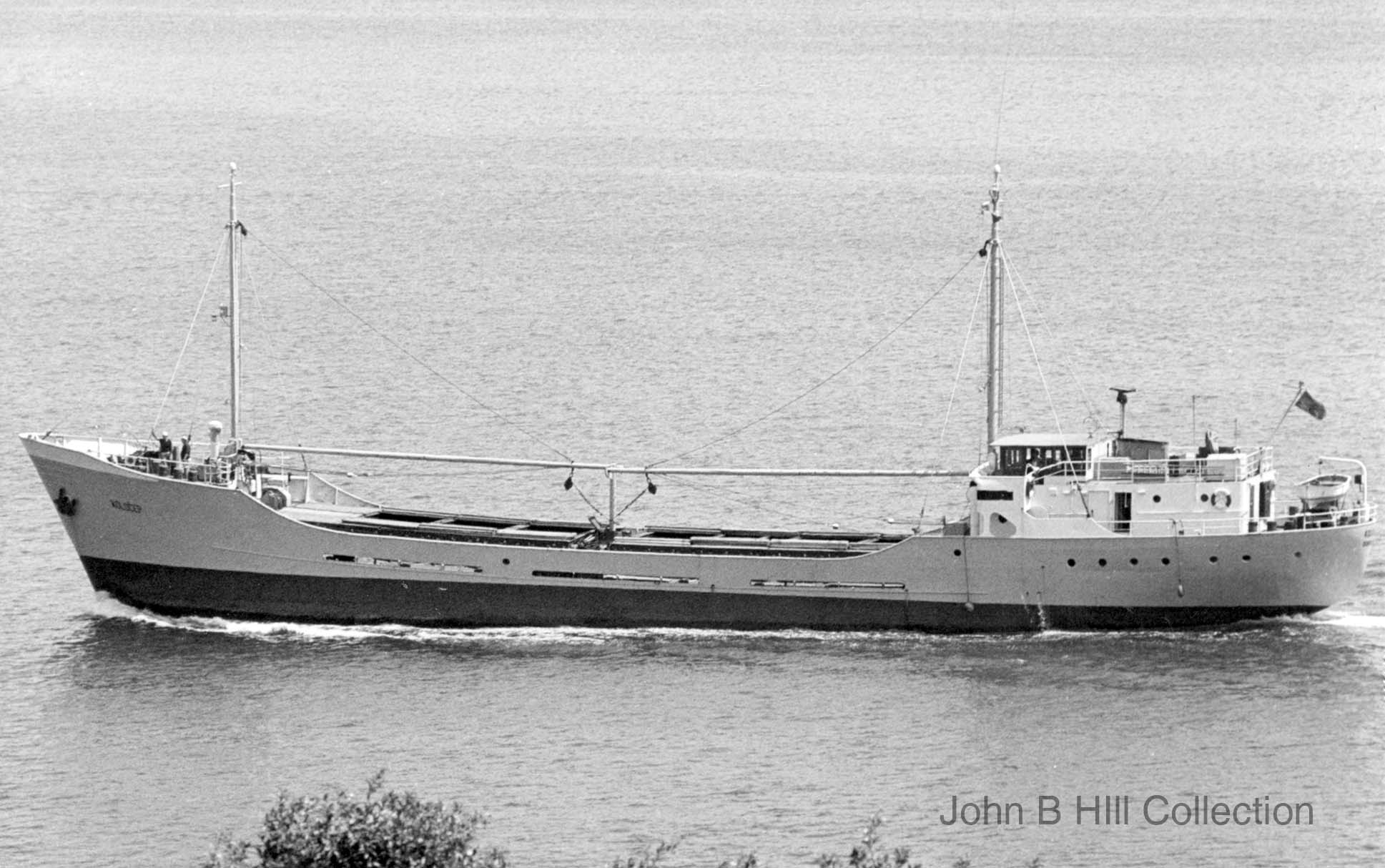
Current Fleet
Two bulk carriers of 38,700 dwt recently entered service in 2016 as AP Dubrava and AP Revelin and completed to the award winning ‘Green Dolphin’ design by Chinese shipyards. The Shanghai Merchant Ship Design and Research Institute (SDARI) and Det Norske Veritas (DNV) classification society had produced a design to combat high fuel costs and new environmental standards. The design has a length of 180.0 metres, moulded beam of 32.0 metres, depth of 15.0 metres and loaded draft of 9.5 metres, with five holds served by four deck cranes of thirty tonnes capacity. A Wartsila main engine produces 6,100 bhp at 99 rpm to give a service speed of fourteen knots, daily fuel consumption of 17.7 tonnes and endurance of 18,000 nautical miles. Orders for eighty vessels to the design have included twenty delivered to Interlink Maritime Corporation during 2015/17, all having the prefix ‘Interlink’ to their names, and two for Pioneer Marine of Oslo in 2015/16 named Falcon Bay and Kite Bay. The current Atlantska Plovidba fleet were engaged on the following worldwide voyages in August 2016:-
- AP Argosy – Arrived Itaguai (Brazil) to load coal for Hamburg
- AP Astarea – On passage to Bombay
- AP Drzic – On passage to Djen Djen (Algeria) with steel products
- AP Dubrava – On passage to Novorossiysk in the Black Sea
- AP Jadran – Arrived Ust Luga in the Russian Baltic
- AP Revelin – Arrived Messaieed (Qatar)
- AP Slano – On passage to Kwinana (Australia)
- AP Ston – On passage to Bunati (Indonesia)
- AP Sveti Vlaho – Arrived Kohsichang (Thailand)
- City of Dubrovnik – On passage to Izmit (Turkey)
- Imperial – On passage to Tubarao (Brazil) to load iron ore
- Libertas – Arrived Zhoushan (China)
- Miho Pracat – Arrived Itaguai (Brazil) to load coal for Hamburg
- Oluja – Arrived Batumi in the Black Sea
- Orsula – On passage to Klaipeda (Lithuania)
- Sveti Nikola I – On passage to Bilbao
- Zagreb – Arrived Rostock in the Baltic
There are two unnamed bulkers of 63,800 dwt under construction in Chinese yards.
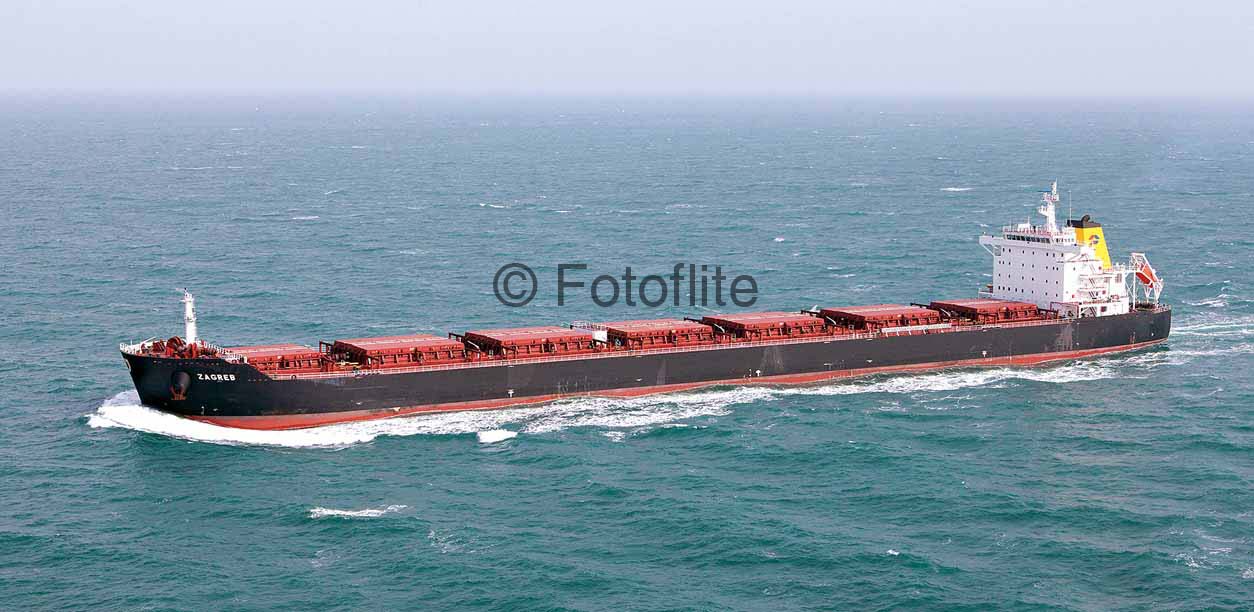
Postscript
The Croatians are much more Western looking than the Serbs, and use the Latin alphabet while the Serbs use the Cyrillic alphabet from the East. A vigorous separatist movement grew up throughout post-war years as one of the factors that led eventually to the Balkan War of 1991/95.
The founding of Atlantska Plovidba in 1955 to trade with Britain and Europe and to sail worldwide in the tramping trades is just one example of the Croatian spirit. Dubrovnik today is a tourist destination for people from all over the world, with the old walled city completely car free so that they can walk and enjoy the sights.
Three miles to the north and also part of Dubrovnik is the big peninsula of Lapad, which has the hotels, shops and more modern amenities that tourists demand for their stay.
Atlantska Plovidba has celebrated sixty years in business as an international shipping company trading worldwide during 2015.
The funnel colours have changed recently from yellow with a black top and a red central five pointed star, with this star replaced by a stylised red and blue logo with ‘A’ placed above a ‘P. This gives a more modern western looking appearance without the connotation of the old socialist red five pointed star.
The company houseflag is red above blue with a white central anchor flanked to left and right by ‘A’ and ‘P’, and is the same houseflag of Dubrovacka Plovidba, which it succeeded, except the letters to the left and right of the white anchor were ‘D’ and ‘P’.




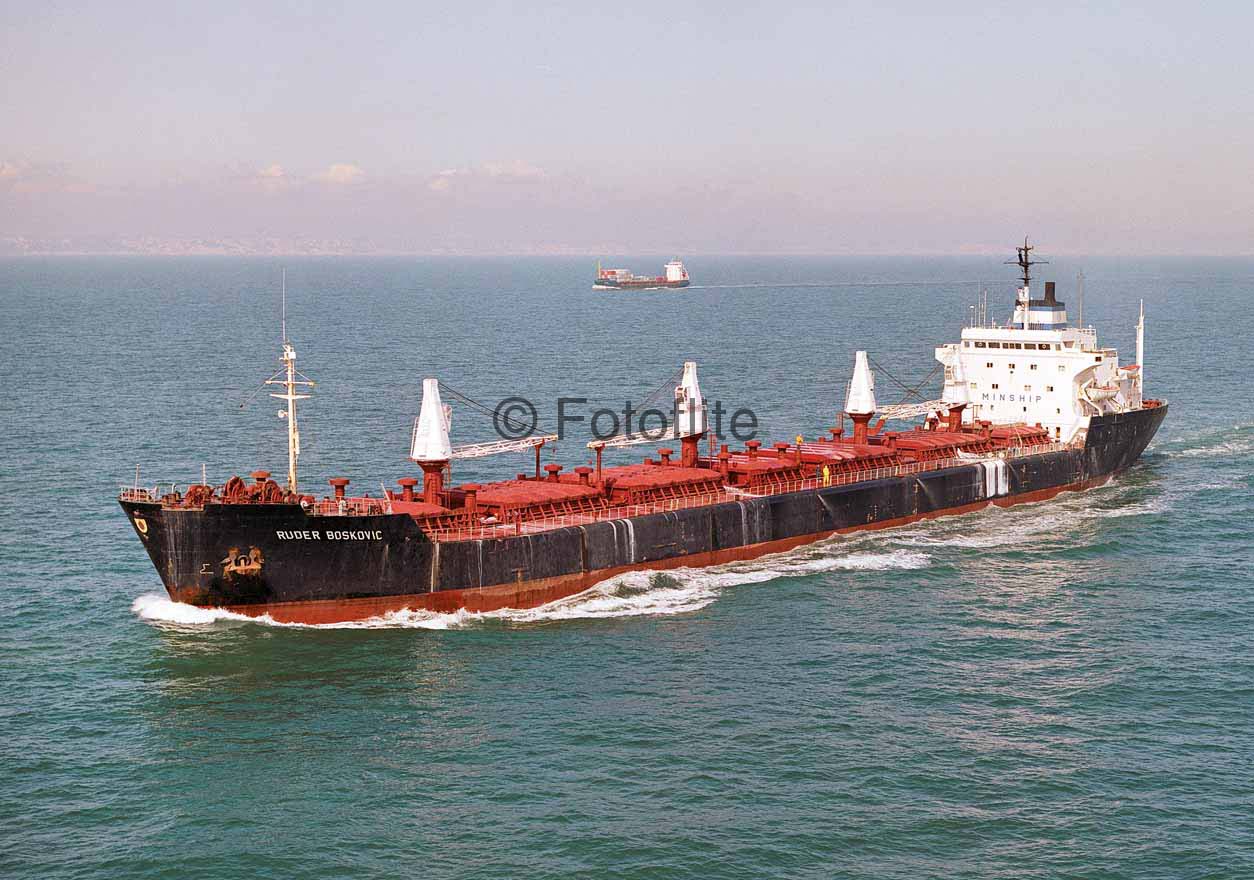
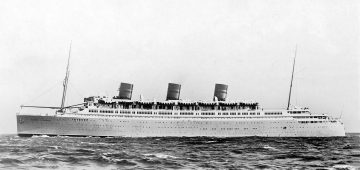
Comments
Sorry, comments are closed for this item